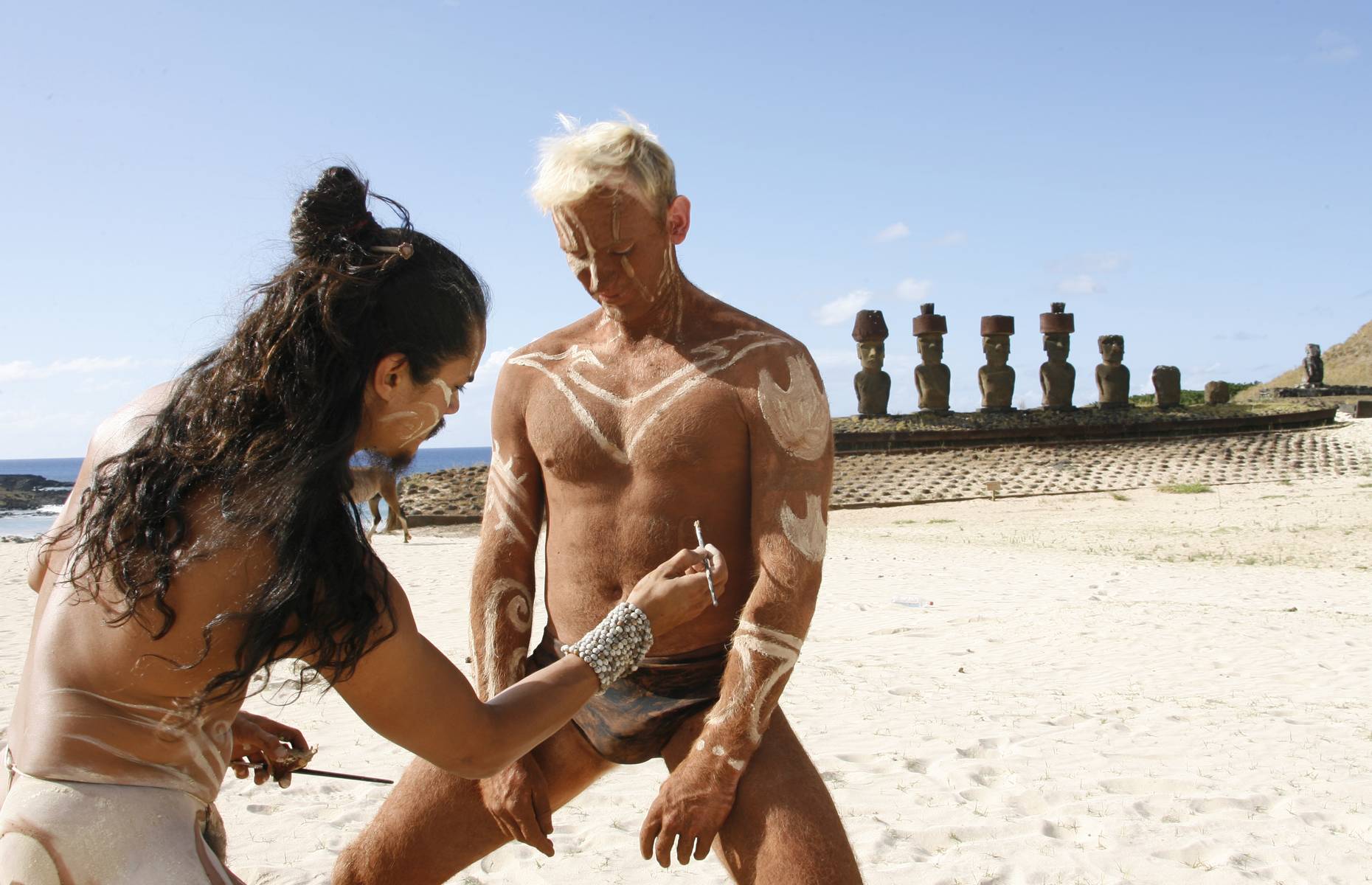ADVENTURE HONEYMOON IN PATAGONIA
Planning a wedding can be an exciting experience, but the anticipation in planning a honeymoon is just as thrilling. Your honeymoon is the unforgettable moment for you and your new husband to spend time together doing the things you love. Common honeymoon experiences include leisurely sipping poolside margaritas at a tropical resort, but that’s not your only option. For the adventurous couple who welcomes a unique honeymoon experience, Men’s Vows has the one for you.
Enter Patagonia Camp, in the Patagonian region of southern Chile. The resort, located on the outskirts of the Torres del Paine National Park, offers the perfect blend of rugged days outdoors with luxurious evenings in the camp. Don’t let the word ‘camp’ fool you: at this all-inclusive resort, you’ll sleep in a private yurt that has all the amenities of a five-star hotel. You’ll be accompanied by local guides on daytime excursions in the surrounding areas and return to gourmet meals and a comfortable bed each evening.
Inside a yurt.
Men’s Vows had the opportunity to visit Patagonia Camp to see what it’s all about. Not only is it the first luxury camp in South America, it’s also gay-friendly. As one of the most popular outdoor tourist destinations in the world, Patagonia hosts explorers from every corner of the globe, and the Patagonia Camp staff have developed an intrinsic ability to accommodate diversity. When guests first arrive at the resort, they tend to sit secluded in the resort’s shared dining room; by the end of their stay, they often eat in groups cultivating friendships with other guests, a testament to the hospitality and sense of community fostered by the resort staff. You arrive a guest; you depart a friend.
Before planning your unforgettable honeymoon to Patagonia Camp, it’s important that you understand the seasonality in South America. The Chilean summer occurs in the same months as the North American winter, which provides a nice escape from the cold climate. This means the high season for planning your trip is from November to March. You may be able to save on lesser expensive rates during the low season pre-November and post-March, but Patagonian resorts are closed between May and August. Some flights in the region are also only available during the high season.
Here’s everything you need to know to plan your adventurous honeymoon or getaway to Patagonia.
How to get to Patagonia
Patagonia is a region shared by Chile and Argentina on the southern end of the continent. There is some extended travel required to arrive at the remote Patagonia Camp resort, which ensures you’ll be off the beaten path. From the Santiago international airport, there are two best options for direct flights into the Patagonia region: Puerto Natales and Punta Arenas.
Puerto Natales is a colorful port town, a three hour flight from Santiago and about an hour drive to the camp. The town is a great place to unwind and explore following your flights. Take the 10-minute cab ride from the airport to Puerto Natales, where you’ll find an abundance of local cafes on the northern side of the walkable town. Grab a panini and a dessert at the Guayoyo Cafe or sip on something sweet on the patio of the Chocolateria Patagonia Dulce. For some astonishing views and authentic Chilean coffee, stop in at The Coffeemaker, conveniently located next to an outdoor clothing store RKF Rockford where you can treat yourself to some wardrobe upgrades prior to your time in the camp.
Easter Island isn’t in Patagonia, but it is Chilean. Another adventure for another day…
The Punta Arenas airport is your second option. The flight time from Santiago is slightly longer than it is to arrive at Puerto Natales, but the four hour drive to Patagonia Camp is quite a bit longer. However, the extra travel time is well worth it when you consider the rich history and geography of Punta Arenas. The city is known for tours to the penguin colonies on the nearby Isla Magdalena, and a visit to the Magallanes museum features lavish residences from prominent pioneer families. If you choose to stay the night in Punta Arenas to take in all it has to offer, the high end Hotel Cabo de Hornos is conveniently located in the heart of the city.
A Pride flag flying over Punta Arenas.
Patagonia Camp provides transportation from either Puerto Natales or Punta Arenas. Views of the pastoral countryside and pristine landscapes during the ride are included free of charge!
Life at the Resort
The people who live in the Patagonia region have immense respect for the land, which allows its guests to enjoy its unspoiled beauty. Patagonia Camp is committed to sustainability, and as a guest you feel that you are contributing to the preservation of an eco-friendly culture. For example, the water in the camp comes from the Lago del Toro on which the resort is situated. Guests are requested to use the natural hygiene products that the camp provides in order to prevent harmful chemicals from damaging the water system. Much of the food and wine is local, and waste from the camp is minimal.
Speaking of food and wine, every meal at the resort is an experience. The camp has its own chef and sommelier, and the cuisine maintains a Chilean flair. Spit-roasted lamb is a special treat and Patagonian tradition that you’re sure to encounter, and calafate berry juice replaces pisco in the local specialty cocktail Calafate Sour. Each dish presents rich ingredients such as the superfood quinoa, seafood from the Chilean coast, and fruit only found in this corner of the world, such as lúcuma. After multi-course meals and savory desserts, it’s not uncommon to see guests linger around the table sharing stories of the day’s adventures, sipping wine or a Calafate Sour.
When at last the time comes to retire to your private yurt, you’re greeted with hotel-grade comforts in a truly unique setting. Each yurt is climate controlled, has a full bathroom, and is equipped with outlets for charging your phone. Space is no concern as every yurt accommodates a standing closet, wooden desk, and balcony, and some larger yurts include an adjoining suite. Select yurts come with an outdoor jacuzzi perfect for watching the sunset over the Lago del Toro while recovering after a strenuous hike.
The Adventures of Patagonia Camp
Which brings me to my next point, and the best part about Patagonia Camp: the Patagonian excursions! There are resorts all over the world that include five star amenities and haute cuisine, but rarely do you have the opportunity to venture forth from your resort into an environment as captivating as Patagonia. At the onset of your stay in the camp, the staff presents your options for outdoor excursions and allows you to build your schedule for the duration of your stay. There are over 25 guided excursions that include hiking, paddle boarding, kayaking, fly fishing, and looking for wildlife both in the immediate vicinity of the camp and inside the National Park. The staff is transparent regarding the difficulty of each excursion so you can decide whether you’re looking for a rigorous activity or a more relaxing day. Either way, there’s an enormous sense of fulfillment following several days of adventure and exploration in Patagonia.
Of particular interest is the crown jewel of the national park: the Torres del Paine towers. The hike to and from the towers requires a good portion of the day, ensuring you’ll earn all the calories you devour at dinner that night. Whether you get to see the very top of the towers depends on the fickle weather; they’re so massive that they are often obscured by clouds. The hike to the lake at the base of the towers, while long and strenuous, is certainly doable by even the most amateur hikers among us, and you’re likely to encounter backpackers along the way. The trail to the towers makes up one leg of the famous W trail, named for the shape it makes on a map. The full trek requires several days to complete, with campsites along the way. Hikers from all over the world venture here to claim victory in completing the full W, but on your honeymoon you and your new husband may prefer to do only one leg and return to a luxury camp in the evening.
If a day-long trek up a mountain sounds a little too extreme, there are shorter (and more flat) options that allow you to lay claim to being outdoors in Patagonia without going overboard. No matter what you choose, the bilingual guides make you feel right at home in the wonder of Patagonia. The easier excursions are by no means less exciting: you’re very likely to encounter guanaco and--if you’re lucky--a puma. Unlike wildlife such as the great condors and the llama-like guanaco, there’s no guarantee that your guide will be able to spot a puma, as they’re rare and easily camouflaged. The only guarantee is that when you return from Patagonia, you’ll do so reinvigorated and confident that you didn’t miss out on a truly adventurous honeymoon.


























